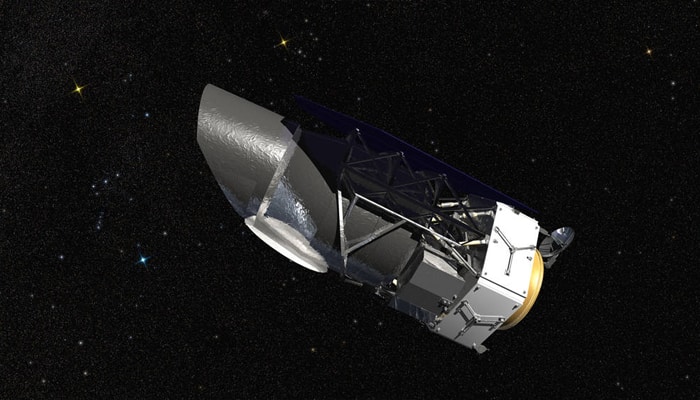Zee Media Bureau
New Delhi: US space agency NASA, in its latest endeavour, has decided to build a new telescope, in a fresh attempt to delve into the secrets of the universe.
The telescope is touted to be wider and will have a view 100 times bigger than that of the Hubble Space Telescope. The telescope will be called Wide Field Infrared Survey Telescope (WFIRST).
Dark energy, dark matter, how the universe evolved over time are just a few things on NASA's to-do list and also something that scientists around the world have been researching on for years.
Slated to be launched in the mid-2020s, the observatory will also discover new worlds outside our solar system and advance the search for worlds that could be suitable for life.
According to NASA, WFIRST is the agency's next major astrophysics observatory, following the launch of the James Webb Space Telescope in 2018. The observatory will survey large regions of the sky in near-infrared light to answer fundamental questions about the structure and evolution of the universe, and expand our knowledge of planets beyond our solar system – known as exoplanets.
It will carry a Wide Field Instrument for surveys, and a designed to block the glare of individual stars and reveal the faint light of planets orbiting around them.
By blocking the light of the host star, the Coronagraph Instrument will enable detailed measurements of the chemical makeup of planetary atmospheres. Comparing these data across many worlds will allow scientists to better understand the origin and physics of these atmospheres, and search for chemical signs of environments suitable for life.
Quoting Paul Hertz, director of NASA's Astrophysics Division in Washington, NASA reported that, “WFIRST is designed to address science areas identified as top priorities by the astronomical community. The Wide-Field Instrument will give the telescope the ability to capture a single image with the depth and quality of Hubble, but covering 100 times the area. The coronagraph will provide revolutionary science, capturing the faint, but direct images of distant gaseous worlds and super-Earths.”
The telescope’s sensitivity and wide view will enable a large-scale search for exoplanets by monitoring the brightness of millions of stars in the crowded central region of our galaxy.
By measuring the distances of thousands of supernovae, astronomers can map in detail how cosmic expansion has increased with time.
WFIRST also can precisely measure the shapes, positions and distances of millions of galaxies to track the distribution and growth of cosmic structures, including galaxy clusters and the dark matter accompanying them.
NASA further announced that the observatory will begin operations after travelling to a gravitational balance point known as Earth-Sun L2, which is located about one million miles from Earth in a direction directly opposite the Sun.
Watch the video below:
(With IANS inputs)
















